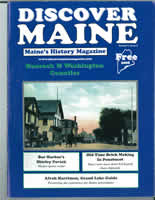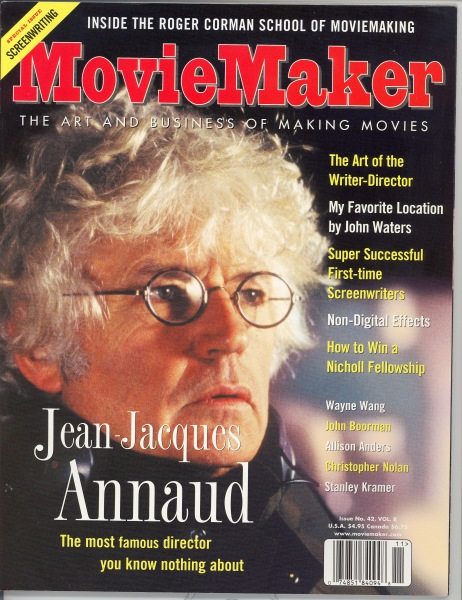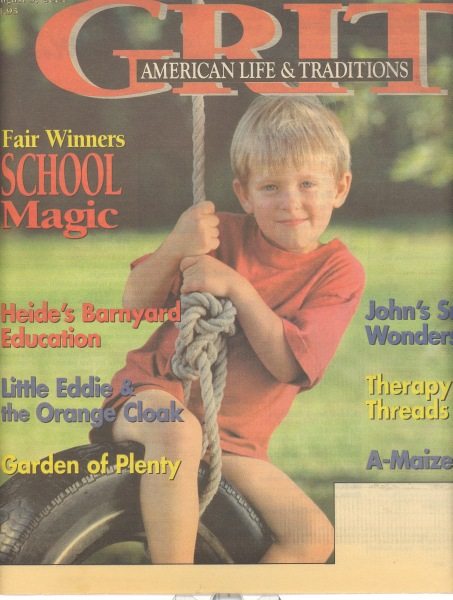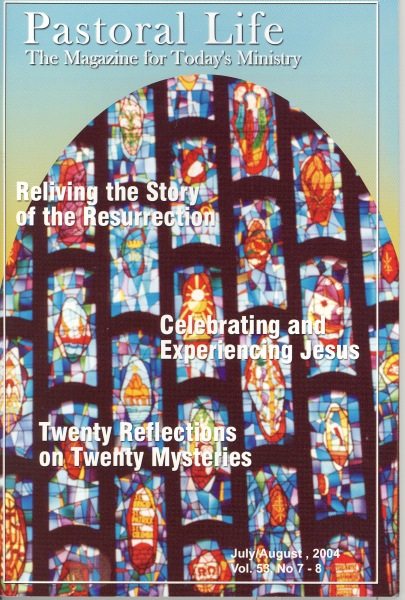Creating an Inspired Life: Art & Intuition
By Susan Stroh
Your life can be your greatest work of art. You, the artist, can create your life as a work of beauty and inspiration! Despite the grand image, all too often we find ourselves in a rut, held down by the mundane or simply stuck in the doldrums with no wind beneath our wings. What can we do when too much negativity bogs down our lives?
Get inspired! Inspiration will recharge our batteries, give us a tune-up, and put our attention on what is most intimate to us–our dreams, purposes and gifts to the world. Inspiration involves receiving truth about ourselves and life that boosts us back up to a wavelength where we can once again soar. And when we’re in flight, we inspire others.
Take a look at what inspires you the most. Is it some kind of art form: music, dance, writing, photography, storytelling, movies, gardening, being in nature? Isn’t it usually about connecting at an intuitive level through some form of creative communication? In a letter to H. G. Wells, Henry James wrote, “It is art that makes life, makes interest, makes importance, for our consideration and application of these things, and I know of no substitute whatever for the force and beauty of its process.” And Oscar Wilde said emphatically, “It is through art and art only that we can realize our perfection; and it is through art and art only that we can shield ourselves from the sordid perils of actual existence.” Willa Cather speaks of the relationship of art to truth. “Artistic growth is, more than it is anything else, a refining of the sense of truthfulness. The stupid believe that to be truthful is easy; only the artist, the great artist, knows how difficult it is.”
Inspirational speakers are artists who dig deeply within themselves, within their lives to distill truths which will arouse, animate and imbue us with the desire to tap our highest potential.
One noteworthy speaker is Dewitt Jones, previously a landscape photographer for National Geographic, an Academy Award nominated filmmaker and a photojournalist with over ten books to his credit. His professions have nurtured a lifestyle inclusive of a very large spiritual component. Dewitt has taken the time to reflect on some basic questions: Why am I here? What is beauty? How can I live with others on this planet in harmony? These questions led Dewitt to answers and yet another profession as a highly paid inspirational speaker, lecturing about creativity to the corporate world.
Part actor, part kindly New England preacher and wholly an artist, Dewitt Jones takes the stage with the presence of a friend who would guide you on an adventure. There’s no hype, no big band entrance music, because Dewitt Jones is enough. Why? He knows what it’s like to be filled to the brim, to be whole through creativity. He knows what it’s like to fall in love with the world and he invites you to do the same.
How do we “fall in love with the world and fill our cup?” Dewitt asks. First, he says, “what is creativity but the art of seeing things in a new way; the art of looking at the ordinary and seeing…the extraordinary. The essence of creativity is not a technique but an attitude; an attitude of curiosity, openness and celebration.”
What happens when we see one of Dewitt’s extraordinary photographs? During his presentation, Dewitt has the room darkened so that “God can talk to us” through Dewitt’s exquisite photographs of nature. Dewitt captures the essence of a humble old barn and shows us the holiness of a cathedral. He does this with the right light, angle, lens and point of view. When someone like Dewitt captures the essence of something, it announces that the ideal is attainable.
But Dewitt mentions how once he was shooting in a gorgeous venue, but just wasn’t getting the shot. A little voice inside told him, ‘turn around!’ and there, 180 degrees from where he was looking, was ‘the shot’.
Individually, each of us can do this. Just by changing our point of view, refocusing or finding a better lens, we can see beyond an impasse to a better answer.
Ordinary life presents challenges begging for solutions. Dewitt advises against getting stuck on any one solution, but rather to be open to the possibilities. “Don’t stop at the first right answer,” Dewitt says. “Press on to the next right one. Embrace change.” He shows us three right answers to the question, “How do you photograph the redwoods in Northern California?” The first two answers are beautiful, engaging photos from the usual perspectives. But Dewitt looked further for another good answer. His third photo was taken lying on his back underneath a rhododendron plant. It’s a view looking upward through rhododendron leaves and mist to the tips of the trees. It is a truly unexpected view and the most breathtaking shot of all.
When a piece of art makes us catch our breath, what happens? Often we are experiencing what the artist felt in taking a risk, pushing the envelope, and looking for a unique perspective. Certain films and books change us forever because the writer takes a look at life through a lens that surprises us, or chooses an environment we haven’t experienced, or has persisted to show us the extraordinary in the ordinary.
Other kinds of art: painting, dance, music can unleash creative energy in us. The very highest experience we can have is creativity. It is closest to us as beings, it’s where we really live.
Dr. Linda Seger is another inspirational speaker whose life work inspires countless people. She’s the author of six books on screenwriting and filmmaking and has been a script consultant in Hollywood since 1981. Linda uses every bit of what she’s learned from her doctorate in theology and drama, and three master’s degrees to help writers and producers make “good scripts great.”
But back when she was just 19, at college, she had to learn what Dewitt calls “looking for another right answer.” She describes it this way. “I was passionate about drama. But I wasn’t a very good actor. I definitely was not the brightest kid in any of my drama classes. I thought, how could I major in drama when I’m not the best? I remember standing in the middle of my college dorm room, thinking about this, praying about it, when I heard a voice inside my head. It was quiet but clear, and it said: ‘your job is to keep the dream of drama alive.’
I knew immediately what that meant. I sensed that drama had the ability to illuminate the human condition. To introduce us to worlds and characters we’d never meet, to teach us tolerance and compassion. To introduce us to the breadth and depth of humanity.” For over thirty years Linda has followed that calling and has helped make over 2000 screenplays better. Her lively, enriching presentations keep the dream of drama alive and help people conquer the seemingly insurmountable odds of getting a film bought and made.
Linda not only leads seminars on the subjects found in her books, but she also gives inspirational talks about creativity and spirituality. “In both areas,” she advises, “individuals need to become less influenced by the conventional thinking of systems and institutions with their life-squelching ‘there is only one way to think, act, live philosophy’ and must learn to trust their own voices more.” Linda states, “don’t give your creativity or spirituality over to someone else to determine them, these are your personal realms. You may do things differently from everyone else and that’s okay.
Our whole society teaches us what we could call linear thinking. Our school systems, some of our religious institutions and many of our families are trying to teach us to be accurate and right. But the creative process demands flexibility and possibility. I try to inspire people to take off the lid, see things differently and have lots of fun!”
Linda tells how one time, while lecturing in Rome about creativity, she used film clips from The Dead Poet’s Society to illustrate how difficult it is to be a creative person in a conventional society. Afterwards a woman came up to her and in broken English said; “I heard bells ringing”. We need more experiences where bells and whistles go off and we see our lives more positively.
The act of creation is by far the most fun thing we do. And art is at it’s best when it inspires us to create. Some people get discouraged before they begin. Perhaps that’s because they’re afraid of making mistakes. Dewitt says, “The average National Geographic article uses four hundred rolls of film. Four hundred rolls? That’s 14,000 photographs to get the fifty or so that accompany an article. (Ed. Note: he worked before digital cameras were used.) If I worried about making mistakes, I’d simply have to give up the profession of photography. Time and again I’ve found that it’s the ability to risk possible failure that has led me from a good shot to an extraordinary one.”
It’s blatantly false that there are creative people and noncreative people. We are all creative people, but some are less suppressed in the area than others. Dewitt asserts that a key to finding one’s creativity is to discover “what fills you with the joy of living.” He sometimes asks people to write down the five things that “fill their cup”, and then to write down the date of the last time they did those things. Dewitt says, “I’ve had people break down and sob when I do that. Society has told them that if they follow track “A” they will be very happy and they follow track “A” and find emptiness.”
We have to follow what our inner voice, the you-ness of you, the me-ness of me, says and not listen to the outside noise. We have to be aware that the effect of bad news and gossip on our psyches can be quite insidious, wearing us down little by little until we sometimes feel immobilized and helpless. By ignoring all the fear mongering, we can steer clear of ruts and unnecessary detours. Then by focusing on good news about ourselves, our friends, the future, we feel refreshed with hope and motivated to create our days like mini upbeat plays. We need to connect with people who inspire us and support our dreams.
That is a clue to our creativity and power. When we are joyfully on our own path, our lives automatically inspire others; our lives are our very best works of art.
One work of art we all indulge in every day is conversation. Lance Miller is an inspirational speaker who knows a great deal about communication. He also knows about taking risks. He’s sailed transatlantic on a schooner, flown to exotic places as a pilot and led a ten-man team on a 2000-mile human rights marathon across Europe, to name a few adventures.
But most of all Lance likes creating change with communication. Lance knows that the art of living, like any art form is determined by the quality of communication. He says “the ability to communicate, to create a spark in another, to inspire them is a practice I apply to my everyday life and that is what’s driving my future.”
He believes that whenever he talks, it should be inspirational, whether he’s talking to a customer on the phone, a waitress in a restaurant or to a friend. “I look at every conversation I have with someone as a real treat. I figure we all have a choice in our day to day communication, to either give someone a little lift, push them down or ignore them. If everyone strove to leave a person they are talking to in a little better place than when they first met them, what a different place this would be!”
A Sojourn to Sayulita: Lessons in traveling and living light
By Susan Stroh
The voices of the packing patrol nagged in my head as I struggled through the airport with four pieces of luggage.
You don’t need all this junk, they barked as my suitcase wheels squeaked under the weight.
I talked back. “I need these books, they’ve been stacked by my bed for months and now’s my chance to read them.”
And what about that box of vitamins, herbs and homeopathic remedies you are lugging around? A voice asked.
“In a foreign country, you have to be ready for anything.”
The DVDs?
“To entertain the kids.”
Tape recorder?
“For interviewing. And everyone needs cameras and straw hats. Okay, so I may have a few too many clothes, but a girl needs to be prepared!”
My friend’s family and mine had decided on Sayulita, Mexico, for our vacation destination. We knew only that it was a fishing village about an hour north of Puerto Vallarta—good for surfing, fresh seafood and family relaxation.
We arrived early in the morning at the village edge and sent the taxi-van ahead with our luggage so that we could walk into town. We glimpsed the pure white sandy beaches through the palm groves as we meandered. People were casually picking mangos and other fruit from the trees. Dazzling tropical flowers provided a wild mixture of fragrances. As we entered the village, aromas of cooking: onions, garlic, peppers and spices, further awakened our senses.
The industrious citizens of Sayulita nodded to us as they swept and washed the sidewalks in front of their houses and shops. The dwellings were clean, brightly decorated but sparsely furnished. The temperature was a balmy 78 degrees. It was about this time that I apologized to those righteous voices in my head. I began to suspect that all I would need on my Sayulita sojourn were my shorts, hat, sandals and maybe a toothbrush!
LESSON #1: Less Is More
As we arrived at the Sayulita B and B, white-haired seventy-six-year-old Tia Adriana welcomed us at the top of the stairs in tee shirt and bicycle shorts, flip-flops and a heck of a tan. She grinned like a six-year-old who’d just been handed a double scoop of ice cream. She opened her arms in welcome.
Everyone in the village calls her Tia (aunt in Spanish), because she’s been Auntie to hundreds of families since she came to the village decades ago from Southern California. Some say she ran away from home at age fifty-four because of the empty nest syndrome. I say she ran toward a big vision that, over a span of so many years, came to healthy fruition. She found the clarity she sought in the way the citizens of Sayulita live.
Simplicity is expressed by their semi-agricultural way of life. Not to say this is easier work, but this way of life rules out distractions that often over-complicate urban and suburban life. Picking their own fruit and vegetables, catching fish, mending their nets and still having ample time to enjoy the surrounding beauty appeared to Tia to result in a life with wholesome integrity.
LESSON #2: The Environment Provides
And provide is what Tia, in turn, does so well. First of all, she provides aesthetics of the most cheerful kind. When she first came to Sayulita, she saw its magical hues and used that local palette when choosing paints and decorations for her B & B. The Sayulita B & B is a terracotta, rambling-big house with hand-painted tiles as brilliant and delightful as the parrots in the nearby palm groves.
Constructed over the years by a crew led by Tia’s son and largely decorated by her artist-daughter, the house offers spectacular views. Her four-story B & B sits in the center of town, 100 footsteps from the beach, and 25 footsteps from the hum and industry of the surrounding village.
What kind of people comes to Tia’s B & B? “They may not know it,” Tia says, “but people who come here are looking. They’re often on the brink of change–they want to shed the old for the new.
“My B & B doesn’t attract those who need outside stimulation to have fun. I don’t allow smoking and drinking in my home. The ‘hardy-party crowd’ tends to stay elsewhere. At my place, I get a kick out of my residents not only tapping into the energy of the place, but also into their own inner resources and dreams. I get stoked seeing them getting stoked,” she says, borrowing a traditional surfing term.
The atmosphere is nurturing, safe and playful. How did she do it, I asked? Tia answered, “The way I was brought up and the way I brought up my children and surrogate kids, encouraged freedom of expression and license to be who they wanted to be. Oh, I had a few ironclad rules. We treated each other with respect and importance. But I was big on facilitating spontaneity and creating fun as a group. I suppose a lot of my parenting philosophy found its way into the atmosphere here at the B & B.”
Lesson #3: Trust Your Intuition. Allow It to Carry You Into Spontaneous Activities
Indeed, spontaneity was a key component of my experience in Sayulita. But I had to send my sergeant-of-schedules-self into hibernation and let a more spontaneous self emerge. With that freedom came warm impulses to reach out. At the first breakfast, for example, while getting a refill of fresh-squeezed orange juice in the kitchen, I felt moved to massage the shoulders of a stranger sitting at our table. Her shoulders shrieked out with tension. As I massaged, others looked at me with ill-concealed longing, so I made the rounds–unembarrassed, casual and happy to aid relaxation.
I had fun trying new things. One night, out on the plaza amongst a parade of villagers and tourists, my girlhood friend and I braved Karaoke in Spanish. We chose La Bamba and sang boldly. But they played a different La Bamba than the one that we expected and our singing sounded so awful, our husbands receded into the crowd with embarrassment!
Devoid of plans and rigid schedules, we all tried new things. For example the kids went surfing with the locals (Sayulita is a prime surfing spot), and skateboarded by the beach at night. Our husbands actually learned to salsa. Some other guests and I practiced yoga together in my airy, pastel-colored room overlooking the sea and palm groves. We breathed out the unwanted stale energies and breathed in vibrancy from the seductive waves, the flawless skies, the birds and even the old rooster who had lost his internal clock and crowed all day long—just for the heck of it.
Lesson #4: Respect Ways Others Seek Truth and Embrace Their Good Intent
At every breakfast, Tia asked one of the children to pass a plate of angel cards.
These oversized cards each depicted a glossy picture of a flower and a conceptual word such as “transformation” or “commitment.” Once a card was chosen, a guest referred to the corresponding chapter in an accompanying book entitled Angelic Messenger Cards. Each chapter contained a lesson.
A skeptical voice flared up in me at first. Are there really such things as angels watching over us intending to inspire or guide us? The gentle boy whose hair was twisted into cornrows offered me the plate of cards. His innocent eyes, the color of black walnuts, won me over. I chose an angel card depicting “Emergence”. Its corresponding chapter described the “spiritually awake heart”. Uncannily, each day’s angel card message was personally relevant. I found myself lingering in the great room after breakfast, sitting side by side with those I had chatted with earlier, each of us reading our angel messages while allowing the ocean breezes to play with our hair and our thoughts. This quiet time was followed by a boisterous discussion, where we swapped stories of the benefits of our own spiritual paths–an exciting and affirming dialogue.
Lesson #5: Connection with Others Is a Source Of Renewed Spiritual Energy
One morning, four of us shared secrets at the breakfast table for hours after the painted platters of pastries, fresh fruit, cheese and bread had been removed. One man from abroad revealed that he’d come to the B & B to help get clarity on what to do with his life since winning a major lottery! A Minnesota woman was seeking renewal again, having found great solace at Tia’s five years earlier, after the death of her young daughter. A Virginia woman was traveling with her two sons as a result of a vision she’d had in a Native American sweat lodge ceremony. I confessed a hunger for adventure, for taking more risks and chances with my life. And I wanted to travel light. This realization carried me home renewed and optimistic.
For a week in a tiny fishing village I watched the people of Sayulita living lives of integrity—combining the simple pleasures of work, play and community. I carried home a treasure trove of life lessons, and guess what? They didn’t weigh an ounce! Now I only had to manifest these lessons as I adventured through my life…with one small carry-on.
Author Note: This article was published some years ago and since then, Tia Adriana retired from running Adrianna’s B and B, but her daughter Lynn runs Casitas Sayulita, very charming houses Tia and family had built and which you can see and book if you visit http://www.casitassayulita.com.






